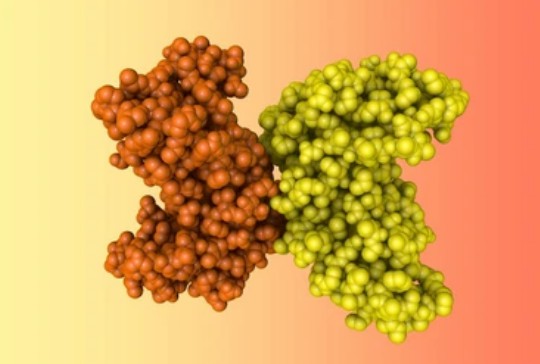Analysis of Molecular Interactions by NMR
Creative Biostructure can utilize a variety of NMR technologies to provide customers with analytical services for the molecular interactions of organic-organic, organic-inorganic, and inorganic-inorganic compounds. We provide one-stop services including sample preparation, data collection and analysis, data interpretation, and report issuance. Our services aim to help customers understand the nature and intensity of molecular interactions, as well as a wide range of other intermolecular behaviors.

Analysis of Extensive Chemical Interactions in Molecules
Creative Biostructure can use NMR to analyze several broad interactions between chemical molecules, including:
| Type of interaction | NMR parameters |
|---|---|
| hydrogen bond | Changes in chemical shifts and coupling constants. |
| Weak intermolecular interactions | Changes in chemical shifts and spectral line broadening. |
| Ion interaction | Changes in chemical shifts, coupling constants, and additional peaks. |
| Pi-pi interactions | Changes in chemical shifts and coupling constants. |
Analysis of Molecular Interactions between Organic Compounds
| NMR analysis method | Our data interpretation strategy |
|---|---|
| DOSY NMR | We measure the diffusion coefficient of individual molecules to determine whether the molecules interact. |
| STD NMR | Is used by us to detect weak interactions between two molecules. |
| NOE NMR | It is used by us to detect the interaction between protons in different molecules. The intensity of the peaks in the NMR spectrum can reflect the distance between protons. |
| 1D 1H NMR spectroscopy | It can be used to detect changes in the chemical shift of protons during ligand binding. |
| NOESY NMR | It can be used to analyze intermolecular interactions between ligands and proteins, and quantify the binding affinity and structural conformation of protein-ligand complexes. |
| 2D heteronuclear nuclear NMR spectroscopy | It can be used to detect the chemical shift changes of different atomic types during ligand binding and the binding modes of ligands to proteins. |
Analysis of Molecular Interactions between Inorganic Compounds
Our approaches
| NMR methods | Information available |
|---|---|
| Solid state NMR | Provides information about the local structure of inorganic substances, such as the distance between different atoms, lattice symmetry, and the presence of impurities or defects. |
| MAS NMR | By analyzing the NMR spectra of inorganic substances before and after the interaction, any changes in the chemical environment or structural arrangement can be identified. |
| DOSY NMR | It is used by us to analyze inorganic interactions in solutions. By measuring the diffusion coefficient of a single species, it is possible to determine whether inorganic substances interact with other substances in the solution. |
| Paramagnetic NMR | It is used by us to analyze the interaction between inorganic and paramagnetic substances. |
Examples of samples that can be analyzed
- Zeolite
NMR analysis of the interaction between guest molecules and the zeolite skeleton.
- Metal-Organic Frames (MOFs)
NMR analysis of information on the chemical environment of metal ions and ligands.
- Analysis of the interaction between minerals and water
Analysis of the coordination of metal ions with water molecules in minerals and the conformational changes that occur during hydration.
Analysis of Molecular Interactions between Organic and Inorganic Compounds
Examples of samples that can be analyzed
- MOFs. Analysis of the Properties and Intensity of the Interaction between Metal Ions and Organic Ligands
- Protein metal complexes. Analyze the binding of metal ions to specific amino acid residues in proteins and the conformational changes that occur during binding.
- Coordination polymers. Analyze the structure and properties of coordination polymers, as well as the properties and strength of metal ligand interactions.
- Organic reactions catalyzed by inorganic substances. Analyze organic reactions catalyzed by inorganic species such as transition metal complexes.
Quantitative analysis of interaction
We can quantify the interactions between organic and inorganic molecules for our customers.
- Titration experiment. Determine binding affinity or stoichiometry of interactions.
- Relaxation measurement. Use T1 and T2 to determine the rate of interaction, or study the presence of intermediates in the reaction.
Creative Biostructure is committed to providing high-quality NMR analysis services to advance the life sciences fields. If you have any questions or needs, please contact us and our customer service staff will help you the first time.
Ordering Process
